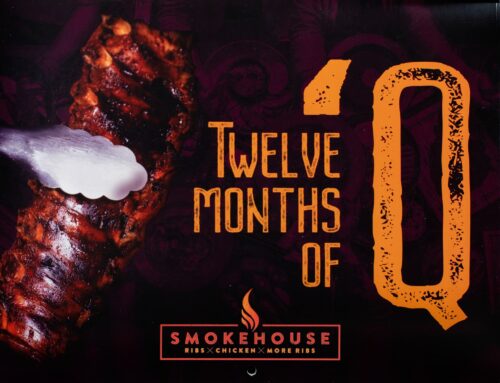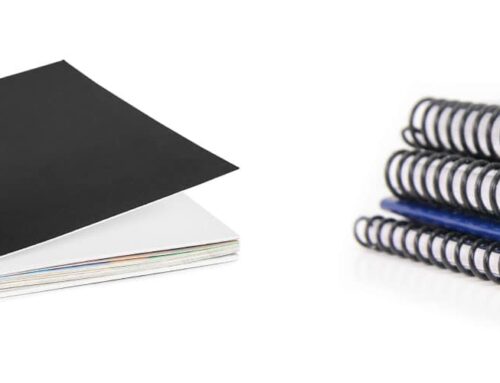When we talk about putting together printed materials with staples in the world of printing, it’s called stitching. Among the different stitching methods, saddle stitching stands out as a favorite for many because it brings along several benefits compared to other ways of binding.
At Digiprint, we’re passionate about our work in digital printing because it’s such a creative field. Our customers come to our local card printing shop with a wide range of projects, each with its unique requirements, including how they want their materials bound together.
In this post, we’ll dive into one of these binding methods called “saddle stitch binding.”
We’ll explain exactly what is saddle stitch binding and its typical uses to help you figure out if it’s suitable for your project.

Table of Content
What Is Saddle-Stitch Binding?
The 7 Biggest Benefits of Saddle Stitching Binding
What Kind of Projects Use Saddle Stitching Binding?
What’s the Ideal Page Count for Saddle-Stitch Binding?
Turn to Digiprint for Your Next Saddle-Stitch Binding Project
What Is Saddle-Stitch Binding?
If you’ve flipped through a magazine before, chances are you’ve come across saddle stitch binding, even if you didn’t realize what it is.
In this method, two metal staples are used to hold a booklet together. It’s called “saddle” stitch because of the metal frame, resembling a saddle, that holds the folded pages in place during the stapling process of print materials.
The saddle stitch binding method works best for smaller booklets and is usually the most cost-effective binding option. It’s commonly used for things like wall calendars, magazines, and catalogs.
When saddle-stitching, all pages must be laid out in two-page spreads. This means your booklet needs to have a page count in multiples of four (two pages on each side). You can’t have a page count that isn’t divisible by four because the staple always goes in the middle of a two-page spread.
With saddle stitching, there’s no printing on the spine since it’s just a fold with staples. However, the booklet can lay flat when opened, and because there’s no glue involved, it can be shipped and used right after stitching.
The 7 Biggest Benefits of Saddle Stitching Binding
Now that you know what saddle stitch binding is, let’s take a look at some of its undeniable advantages. One of the main reasons behind saddle stitching’s popularity is that it’s cheaper than other options like case, wire, or coil binding. Beyond money saving, saddle stitching offers many key benefits, such as:
1. Better appearance
Saddle-stitched books, catalogs, and brochures look and feel professional, making them preferred for upscale publications like glossy magazines.
2. Quick and efficient
The process is straightforward, requiring minimal setup time, which suits publishers with tight schedules.
3. Flat and open
Saddle stitch books lie flat and stay open, ideal for items like calendars or catalogs displayed at trade shows.
4. Eco-friendliness
Saddle stitching is environmentally friendly and inexpensive because it requires minimal materials – just paper and wire staples.
5. Lower shipping costs
Saddle stitching adds little weight or bulk to printed materials, keeping shipping costs low, even for large quantities.
6. Versatility
Saddle stitching is suitable for short or long production runs, thanks to minimal preparation needed.
7. Creative appeal
Unlike coil or wire binding, saddle stitching doesn’t produce unsightly holes, making it suitable for materials with images or graphics spanning adjacent pages.
What Kind of Projects Use Saddle Stitching Binding?
Saddle-stitch binding is used to bind various types of documents like instruction booklets, magazines, catalogs, comic books, and more. If you went through the “What is Saddle Stitch Binding” section above, you probably understand that it’s most suitable for books with fewer pages. After all, the staples used can only hold a certain number of sheets securely.
Examples of items where saddle stitching is recommended include:
Wall calendars
Ideal for custom calendars with family photos or client gifts. Saddle stitching ensures durability throughout the year and allows the calendar to lay flat on the wall.
Booklets or catalogs
A saddle stitch book is ideal for internal documents like employee handbooks or external materials like product catalogs. The choice of content is flexible, allowing for branding and logo inclusion.
Reports
Perfect for presenting year-end numbers or company growth summaries. Saddle-stitched reports look professional, lay flat during meetings, and are easily stored.
Miscellaneous personal projects
From family reunion cookbooks to distributing sheet music, saddle stitching offers a secure and aesthetically pleasing binding option for various personal endeavors.
What’s the Ideal Page Count for Saddle-Stitch Binding?
It’s natural to wonder as to which page count is best for saddle stitch. In general, saddle stitching works well for shorter booklets with multiple pages. The technique is ideal for booklets with roughly 8-60 pages.
But if your print project has more pages than that, you might want to consider a different binding technique – like perfect binding. This ensures your saddle stitched book stays intact and looks tidy for a longer time.
The fact is that the exact number of pages that can be bound together varies depending on the thickness of the paper and the equipment used by the printer. So, different printers might have slightly different recommendations on the maximum page count for saddle-stitched books.
Turn to Digiprint for Your Next Saddle-Stitch Binding Project
Are you considering saddle stitching as the binding method for your next saddle stitch book project, but not sure if it’s the right choice? Or maybe you’re undecided between different binding methods and could use some guidance.
The experienced team at Digiprint is here to assist you. With years of expertise in various projects and printing techniques, we’re equipped to provide the support you need. Whether you’re starting from scratch and require templates or already have a clear idea and need a quote, we’ve got you covered.
Our priority is ensuring our customers and their recipients are delighted with the results. Feel free to reach out to us at 775.786.4464 to learn more about our printing services in Sparks, NV. We’re eager to help!
Frequently asked questions (FAQs) about saddle stitching
Still have a question or two about saddle stitching? You’re in the right place. Read on for common questions about this popular book binding method, plus the informative answers from our team of in-house experts.
Some people may be confused about the difference between saddle stitching and side stitching. The main difference is where the wire is stapled. With side stitching, it’s attached to the front cover instead of along the booklet’s spine. This means that the final product won’t open flat, which can be problematic for some types of projects like wall calendars. This also means that you lose some print area in the margins, so you may have to adjust the content in your project if you choose side stitching. Again, if you’re not sure which binding method might be best for your unique project, brand, and budget, contact the expert team at Digiprint today for advice and guidance.
Saddle stitching looks like a neatly bound booklet held together at the spine with wire staples. Projects completed with this binding option look clean, professional, and organized, making it a perfect choice for most any personal or professional booklet.
Saddle stitching is a binding option that many people turn to for both personal and professional projects for a variety of reasons. First, it’s typically more cost-effective than other methods like perfect binding or hand stitching. That means it’s ideal for people or businesses who are on a budget. Plus, it can often be done more quickly than other methods, which means it’s great for those who need a fast turnaround. Finally, because it uses wire staples instead of glue as the binding agent, this method is also a bit more environmentally friendly than others.
When you choose printing experts like Digiprint for your saddle stitched booklet, your project will be printed and assembled automatically by a machine—under the close supervision of our team, of course. It will print the right content on the right pages and then fold and staple them so they’re in the correct order, all in a matter of minutes. Before machines like these, methods like hand stitching and even sewing leather may have been used to bind books and similar projects. Thanks to technology, however, the process is now fast, easy, and almost totally automatic.
There’s truly no type of saddle stitched booklet that’s most common, since this is such a popular and versatile printing method. That said, you may have already seen or handled projects with this type of book binding in the form of an event program, a calendar, or a directory, as these are some of the most common applications.
Saddle stitched books look impressive and professional. They’re highly customizable and versatile, since you can print in full color or black and white, include all kinds of text and images in the booklet pages, and personalize the front cover. Plus, because of the way they’re bound, you can display them laying flat or spread the pages to make them stand—which makes them perfect for displays in offices or at conventions or trade shows. Finally, this binding type is typically more cost-effective than others (such as perfect bound books), and most printing service businesses can offer a quicker turnaround on them.
These types of books can be used for a wide variety of printing projects, from catalogues and magazines to programs and mailers. Because you can select a custom size, choose between different paper types and paper stocks or matte/uncoated versus gloss text finishes, there’s almost no limit to how creative you can get with this binding type. Businesses and organizations of all kinds can benefit from this beautiful method of presenting information.
The number of pages in saddle-stitched projects can vary somewhat, but with two rules: They must be a minimum of four pages, and the total number of pages must be divisible by four because of the way they’re printed. The experts at Digiprint can help you make sure that your design and page count will be compatible with this printing style by checking the InDesign file as well as the hard-copy proof before sending it to final print.
Saddle stitched booklets are printed booklets that are bound in a specific way, with long sheets of paper folded and stapled at the halfway mark.





